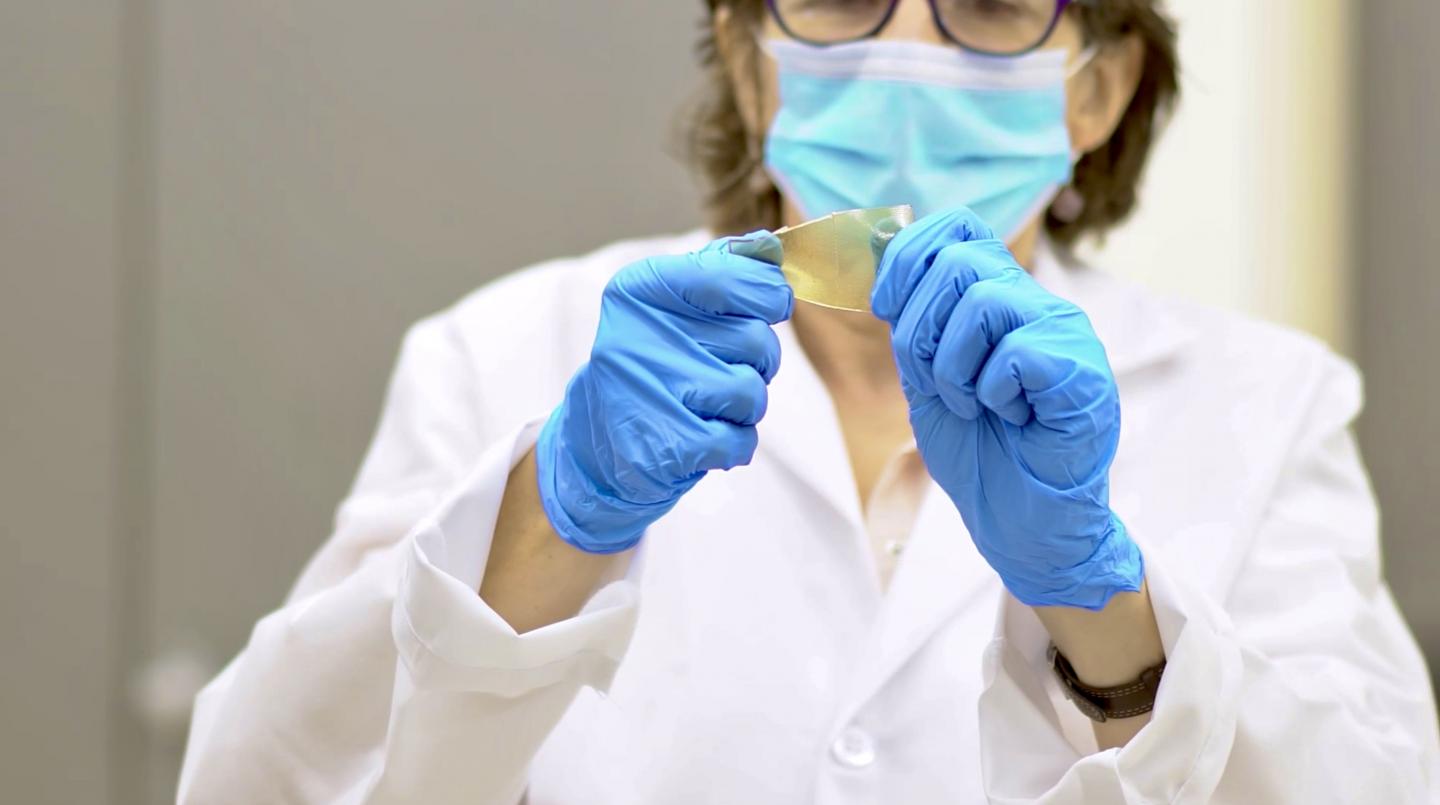
Credit: (Courtesy Texas A&M University )
ABERDEEN PROVING GROUND, Md. — Army and Texas A&M University researchers developed a new material that can autonomously heal in air and underwater.
The first-of-its-kind, 3-D printable and stimuli-responsive polymeric materials are expected to enable massive reconfigurability in future military platforms, which opens new opportunities for morphing unmanned air vehicles and robotic platforms, said Dr. Frank Gardea, an aerospace engineer and principal investigator of this work for the U.S. Army’s Combat Capabilities Development Command’s Army Research Laboratory.
Army researchers envision a future platform, suitable for air and ground missions, with the reconfiguration characteristics of the T-1000 character in the Hollywood film, Terminator 2, he said. As the research matures, the epoxy material is expected to have the ability for massive reconfigurability and have embedded intelligence allowing it to autonomously adapt to its environment without any external control.
“We want a system of materials to simultaneously provide structure, sensing and response,” Gardea said.
Currently, the stimulus this material responds to is temperature, which researchers first selected because of its ease of use during laboratory testing. In the real world, applying a temperature stimulus is not as easy or practical so they introduced light-responsiveness because of its easier to control and apply remotely, Gardea said.
Polymers are made up of repeating units, like links on a chain. For softer polymers, these chains are only lightly connected to each other through crosslinks. The more crosslinks between chains, the more rigid the material becomes.
“Most cross-linked materials, especially those that are 3-D printed, tend to have a fixed form, meaning that once you manufacture your part the material cannot be reprocessed or melted,” he said.
This new material has a dynamic bond that allows it to go from liquid to solid multiple times, which allows it to be 3-D printed and recycled. In addition, the dynamic bonds introduce a unique shape memory behavior, in which the material can be programmed and triggered to return to a remembered shape.
The flexibility introduced to the polymer chain allows it to be fine-tuned, in unprecedented ways, to get either the softness of rubber or the strength of load-bearing plastics.
Dr. Bryan Glaz, associate chief scientist for the lab’s Vehicle Technology Directorate, said much of the previous work on adaptive materials were for materials systems that are either too soft for structural applications or otherwise not suitable for platform development so turning to epoxies, in some ways, is groundbreaking.
Glaz said the research team’s scientific advancement marks “a first step along a very long path toward realizing the scientific possibility for deep future platforms.”
This research is part of an exploratory research program led by the corporate laboratory to look at new scientific developments that may disrupt current scientific and technological paradigms 30 to 50 years from now. Glaz said exploratory research, like this, has current significant scientific risk and seeks to address numerous open scientific questions about material performance and durability.
The researchers recently published their findings in a peer-reviewed journal, Advanced Functional Materials, in the paper, A Tailorable Family of Elastomeric-to-Rigid, 3D Printable, Interbonding Polymer Networks.
The research is still in the discovery phase. The team started off trying to develop a 3-D printable material for structural applications that could be used to print components of UAVs or even rotorcraft. During this exploratory research, they noticed that after failure the surfaces became active and “would easily adhere to one another,” Gardea said. This is when they decided to investigate the self-healing capabilities.
Gardea said the immediate next steps are to enhance the actuation behavior and healing. The researchers also want to introduce multi-responsiveness and have the material respond to stimuli beyond temperature and light.
This research supports challenges highlighted in the U.S. Army Functional Concept for Movement and Maneuver publication related to multi-domain operations and the Army Modernization Priority for Future Vertical Lift by improving knowledge of material behaviors that may be capable of introducing multi-functionality into far-future Army platforms.
###
Army researchers in Maryland and at the lab’s regional site, ARL-South, located in Austin, Texas, collaborated with Texas A&M University researchers, who worked on the chemistry and synthesis of the material. Gardea led a team of Army researchers and students in 3-D printing and characterization of the material.
The laboratory featured the research in its Top 10 Coolest Army Science and Technology Advances of 2019 video.
CCDC Army Research Laboratory is an element of the U.S. Army Combat Capabilities Development Command. As the Army’s corporate research laboratory, ARL discovers, innovates and transitions science and technology to ensure dominant strategic land power. Through collaboration across the command’s core technical competencies, CCDC leads in the discovery, development and delivery of the technology-based capabilities required to make Soldiers more lethal to win the nation’s wars and come home safely. CCDC is a major subordinate command of the U.S. Army Futures Command.
Video: https:/
Media Contact
T’Jae Ellis
[email protected]
Original Source
https:/
Related Journal Article
http://dx.





